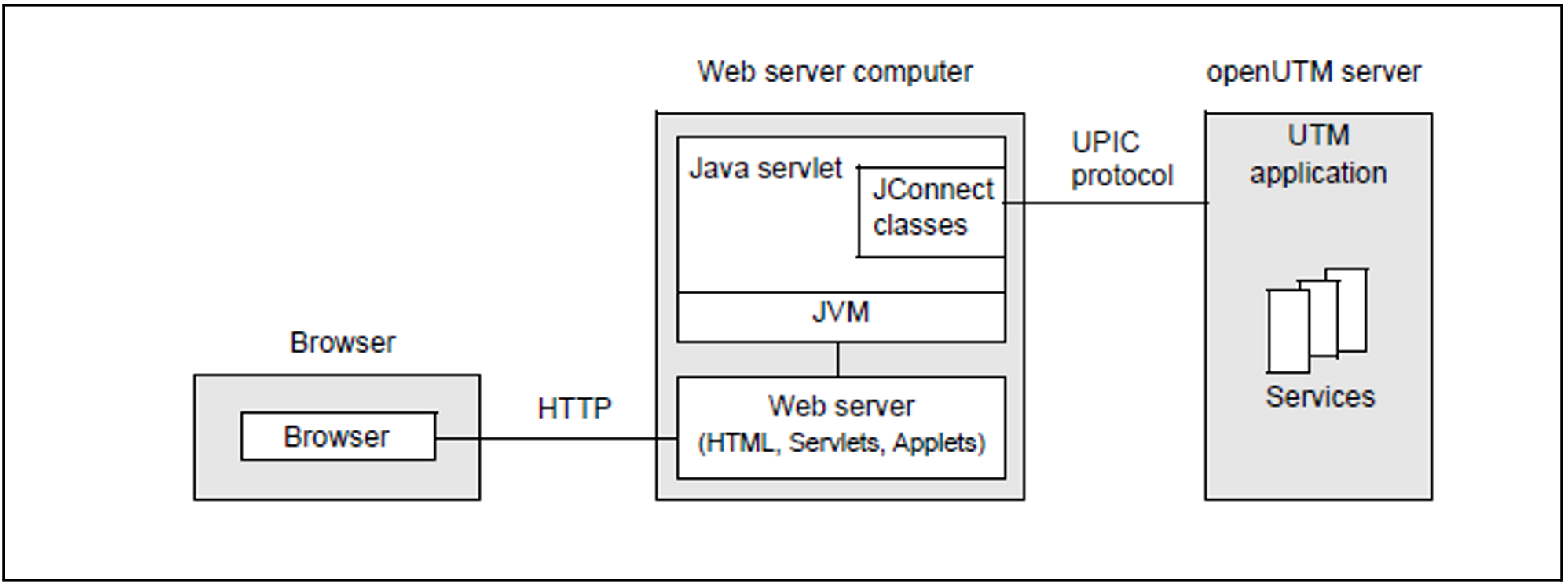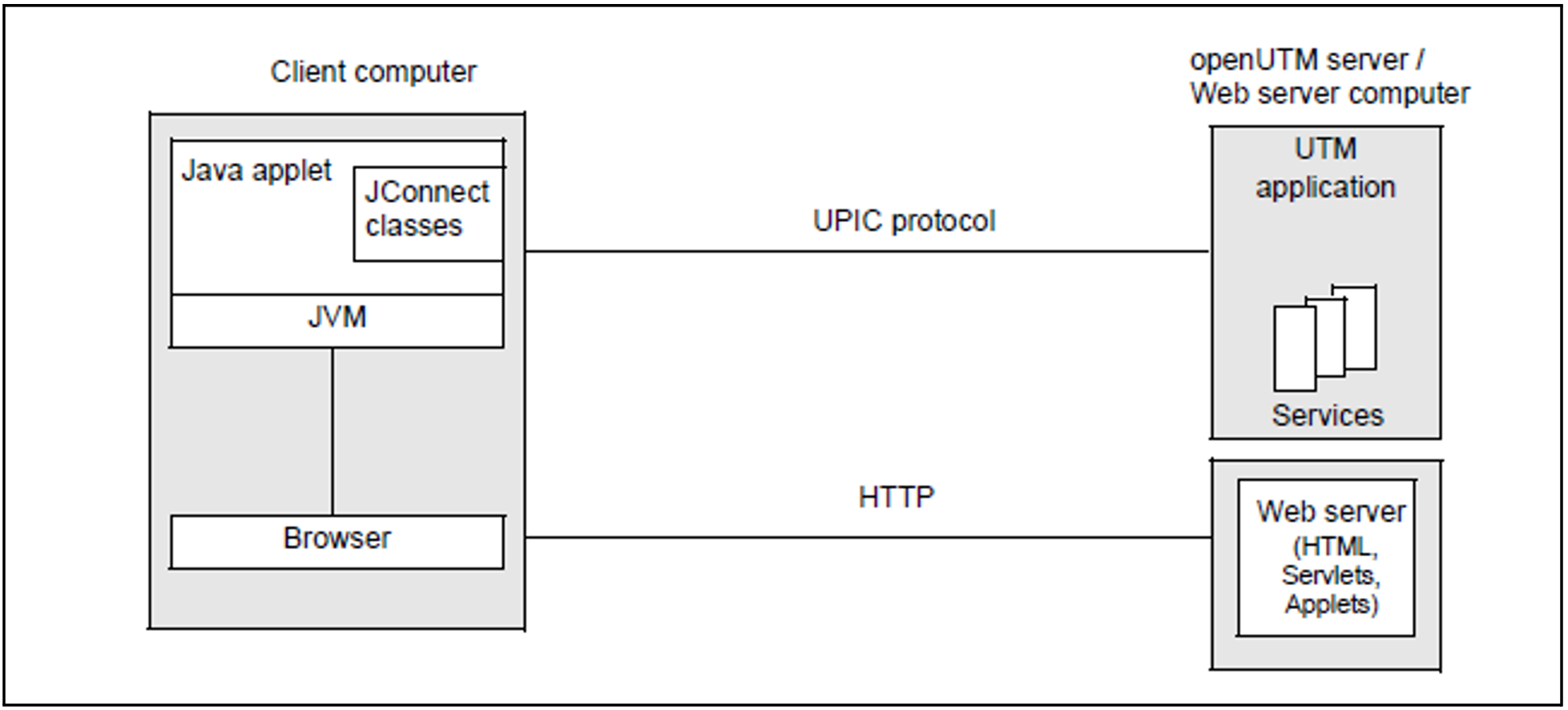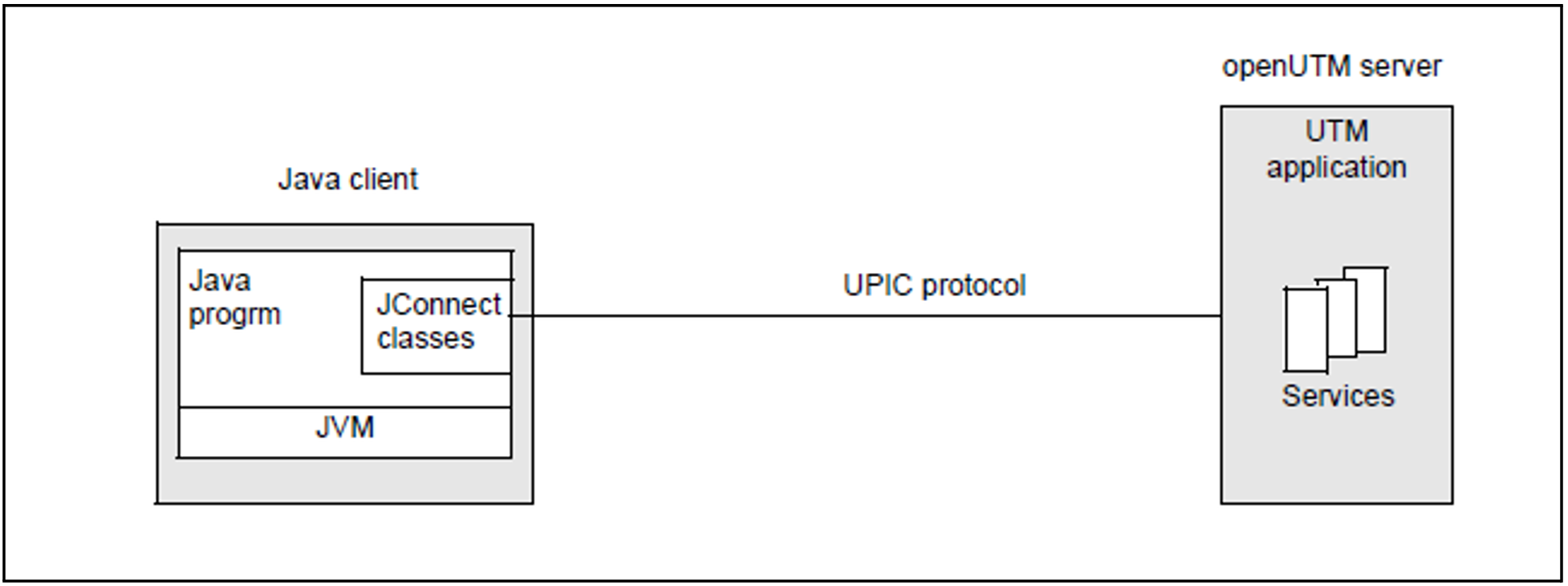The openUTM-JConnect product included in the BeanConnect product provides Java classes that you can use to create clients written in Java. You can connect these clients to UTM applications as UPIC clients, see also section "Integrating openUTM in the Java Enterprise environment".
There are three ways to do this:
by means of servlets running on the Web server
in the browser environment by means of applets
by means of a direct connection
The following diagrams illustrate these three methods:
Figure 14: Connecting via servlets running on the Web server
Figure 15: Connecting in a browser environment via applets
An applet is loaded from the Web server via the browser and started on the client computer. This applet then communicates directly with the UTM application via the UPIC protocol. For security reasons, the Web server in this case (figure 15) runs on the same computer as the UTM application, i.e. applets may only communicate with the computer from which they were downloaded.
Figure 16: Direct connection of Java clients
The openUTM-JConnect product offers the proven functionality of the product openUTM-Client for the UPIC carrier system in a Java environment, such as:
conversation with UTM applications
multi-threading (i.e. a number of parallel conversations)
support of restart functions
support of UTM system and data access control
passwords can be changed by users
adaptation of the ASCII-EBCDIC conversion
Java programmers are thus offered powerful access to UTM applications with a high level of security.
The JConnect classes are described in the Java docs of the openUTM-JConnect product. |



